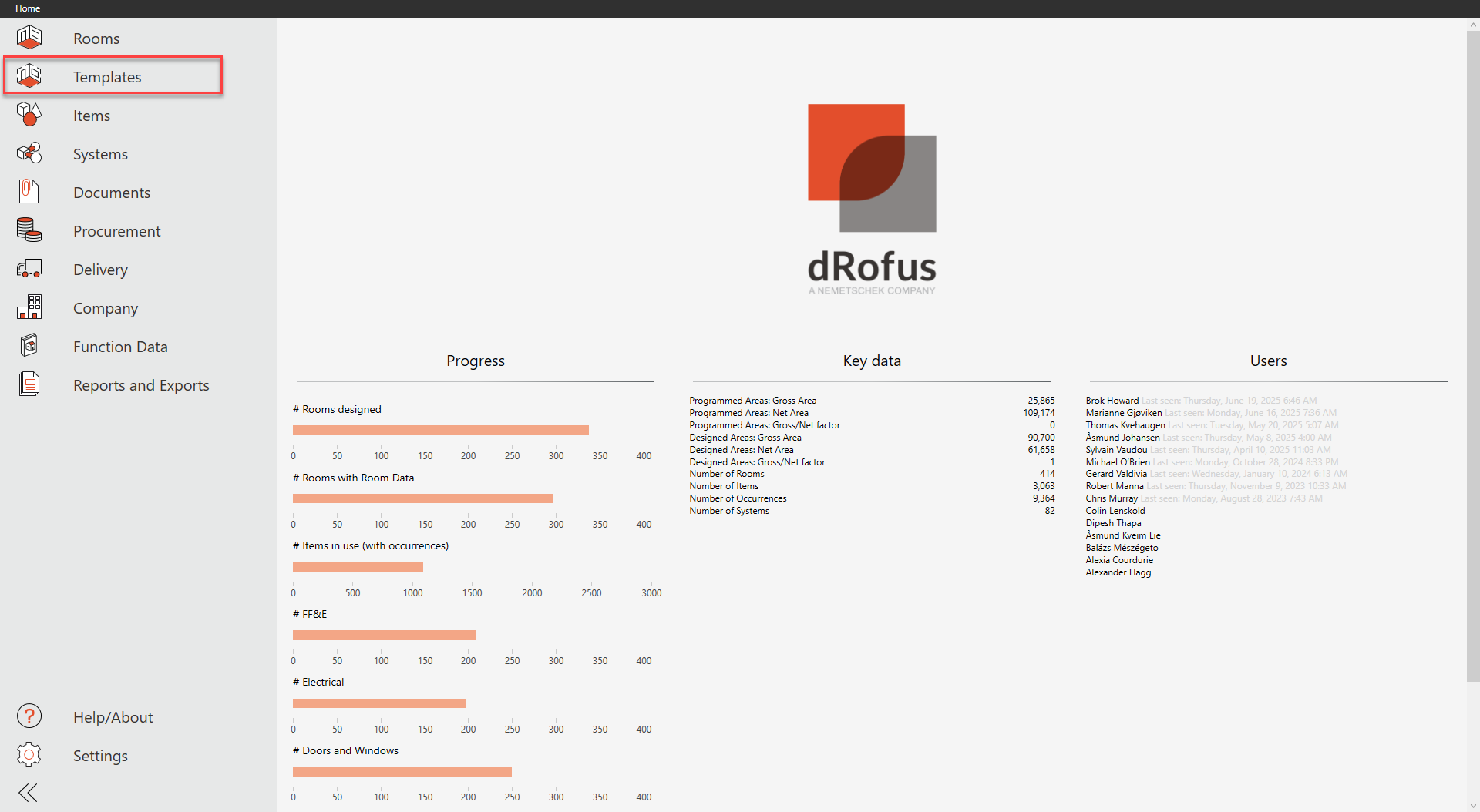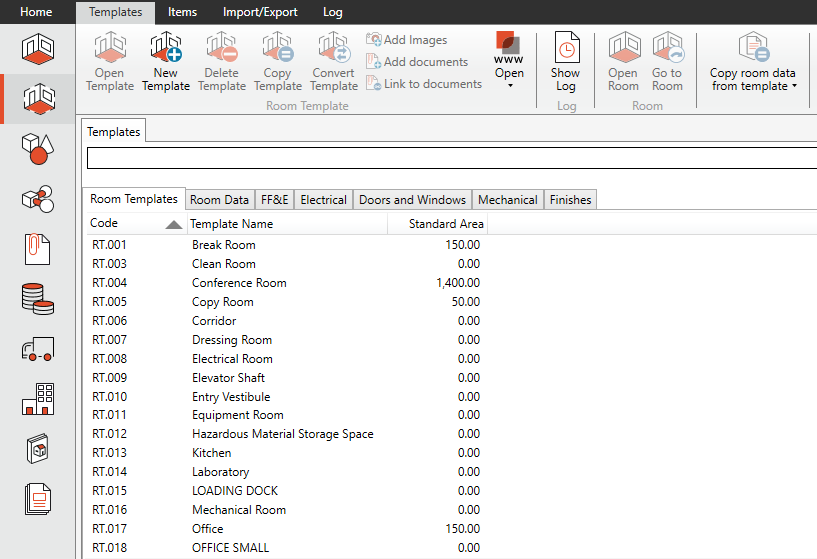Templates
Template usage
If a project features multiple identical rooms, implementing a room template can be a practical solution. Templates enable the creation of standardized room data, finishes, and item lists for the entire project.
By utilizing a template, updates can be made in a central location, ensuring that all identical rooms remain consistent in their requirements.
Templates are especially useful in larger projects, where managing a high number of rooms would otherwise become challenging and potentially overwhelming.

Templates are used to:
Create standardized Room Data and Item lists (Equipment, Furniture, Finishes) for the entire project.
Create new rooms from the templates so it is following a standard from the start.
Templates can define requirements for Room Data or Item Lists or combined into a single template.
Be linked to multiple rooms in terms of Room Data + all Item List statuses, or in terms of specific (Room Data only and/or only select Item List) statuses.
Change information in several room at the same time. Changes made in a template will be reflected in all rooms linked to the template.
When a room is derived, the parts of a room that are not changed will continue to be updated with template changes.
Add or remove occurrences to the selected room template, equipment template or room.
Create a template from a unique room to use it again.

.png)